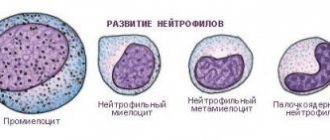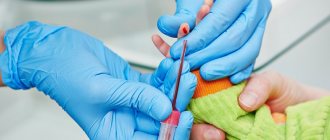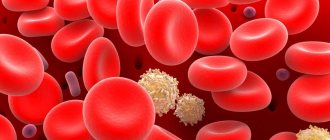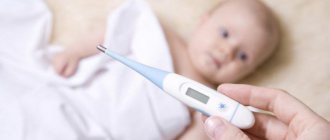Algorithm for collecting blood from a vein
Let's consider the algorithm for collecting blood from a vein for biochemical and serological studies.
On the eve of the study, the nurse warns the patient not to have breakfast and not to have late or heavy dinner. It should be explained that blood is taken for analysis on an empty stomach, because in this way the most reliable result is obtained.
Blood is drawn from a vein in the morning, in the treatment room or at the patient’s bedside.
The nurse dresses appropriately, washes and disinfects her hands, and puts on safety glasses, a mask, and gloves. Next - prepare:
· sterile cotton balls or napkins;
· syringe with a volume of 10 or 20 ml or vacuum tubes for collecting blood for biochemical and serological studies.
The algorithm for collecting blood from a vein consists of the following steps:
· All patient data is recorded in a journal or computer. Containers for blood collection and directions are marked.
· The patient lies down or sits in a comfortable position with the elbow joint extended, the inner surface facing up.
· A cushion or a special pillow is placed under the elbow joint.
· A rubber tourniquet is applied to the middle third of the shoulder over a cloth napkin so as to obtain venous stasis.
· The patient is asked to clench and unclench his fist several times, repeating the movements until the veins are sufficiently filled with blood. The fist is fixed in a clamped position.
· The patient's skin is treated with a cotton ball or a sterile napkin with 70% alcohol, as with an intravenous injection, twice: first, a larger area of skin, then a smaller area where the puncture will be made.
· The balls are dropped into a tray and a vein puncture is performed. If a syringe is used, the plunger should be located as close as possible to the edge of the barrel with the needle cannula so that there is no air in the barrel.
· The vein is punctured at an acute angle to the skin until it feels like it is entering a void. The syringe plunger is gradually pulled back, filling the cylinder with blood. Immediately after the needle enters the vein, the tourniquet is removed from the patient's shoulder. Throughout the blood draw, the nurse monitors the patient’s condition and well-being.
· When using a vacuum tube, the vein is punctured with a needle with an adapter, to which the tube is attached after entering the vein. When taking blood for both biochemical and serological testing, the filled tube is disconnected, and the empty one is connected to the needle through the same adapter.
· After drawing the required amount of blood into the syringe, the needle is removed from the vein after pressing a cotton ball with alcohol to the puncture site. If vacuum systems are used, the needle is removed only after the tube is disconnected.
· The patient is asked to press a cotton ball and hold it on the elbow for 5 minutes.
· Labeled tubes are placed in a special container for transportation to the laboratory.
· All instruments and used consumables are disinfected with subsequent disposal of disposable instruments. After disinfection, reusable materials are washed under running water, dried, if necessary, sterilized and put away in their designated storage areas.
Didn't find what you were looking for? Use the search:
Best sayings:
What kind of mathematicians are you if you can’t password protect properly?
8742 –
| 7552 – or read all.
How to prepare a child for blood collection from a vein
Why is it better to donate blood from a vein than from a finger?
A blood test can be collected in different ways - from a finger (capillary blood) and from a vein (venous blood).
Preference is given to analysis from a vein, as it is more reliable.
An error in the analysis of capillary blood occurs due to intercellular fluid entering the blood being tested, which is practically impossible when taking blood from a vein. In addition, the procedure itself involves an element of extrusion, which sometimes leads to the destruction of some blood cells. Also, if the doctor ordered a lot of blood tests, you won’t be able to get them from just a fingertip. It is more convenient, efficient and, most importantly, more reliable to perform them from venous blood.
Why do you need a blood test?
The doctor may prescribe a set of biochemical blood tests for the child to assess the functioning of organs such as the liver and kidneys, heart, and pancreas. After receiving the analysis, the doctor will determine the disease and select effective therapy. Also a very common general clinical blood test. This test can detect a wide range of diseases. Assessing the amount, type and species-specificity of antibodies will make it possible to determine when the child was infected with which infection, as well as whether the selected treatment is effective. It is also possible to determine the presence of an antigen, that is, the microbe itself in the blood and its quantity. If an allergic reaction occurs, a blood test for allergens will be informative. It will help you draw conclusions about what should be excluded from the child’s diet or environment to prevent such reactions. As well as assessment of hormonal levels, saturation of the body with vitamins, immunological studies and even genetic diseases are determined by venous blood analysis
How to take blood from a vein from a child
The blood draw is carried out by an experienced nurse. In children, veins located in the elbow or back of the hand are used for analysis. In some cases, blood may be drawn from a vein in the forearm, the back of the foot, or even from a vein in the head.
The skin in the area where blood sampling is planned is treated with an antiseptic or alcohol wipe twice. The arm above the puncture site is tied with a tourniquet. To collect blood, use a sterile disposable needle and tube.
Important information
Many parents are concerned about the correct blood levels in the child’s body. A general analysis examines: red blood cells, white blood cells, as well as hemoglobin, lymphocytes, monocytes, and other elements. They also determine the cell size, shape and maturity of red blood cells. Platelets are responsible for blood clotting. The number of these elements is determined using general analysis. Biochemical analysis from a vein helps identify triglycerides. Blood is also taken for allergies.
Below is a detailed transcript:
Red blood cells
They participate in most processes: they deliver oxygen to organs from the lungs and remove carbon dioxide. Blood red cells get this color due to the fact that they contain hemoglobin. The norms depend only on age. Immediately after birth, on the 1st and 3rd days, the norms should be as follows: red blood cells - 4.0 to 6.6 × 10¹²/l.
On the 4th, 5th, 6th, 7th days the norm (erythrocytes) is 4.0 to 6.6 × 10¹²/l. Red blood cells at week 2 – 3.6 to 6.2×10¹²/l. If the standards are lowered, the child may develop anemia. It occurs as a result of various reasons, but ultimately weakens the body, since the organs are less supplied with blood.
If red blood cells are low, you should consult a doctor to prevent dangerous conditions and diseases.
In young children, the norms of cells such as red blood cells are rarely elevated. These are usually abnormal conditions called erythremia. The levels of erythrocytes in the blood can be high in case of heart disease, blood diseases, or dehydration of the entire body.
Parents also need to know about rdw. This is an indicator of heterogeneity in the volume of all red blood cells. Drawing blood for rdw helps determine the difference between small and large cells. As soon as cells of different sizes appear in the blood, anisocytosis begins. This happens with age, but sometimes the phenomenon occurs due to anemia or a malignant tumor. To rule this out, doctors recommend taking a blood sample to test for rdw.
Usually, children's blood is taken for RDW when a general analysis is prescribed. If there is a suspicion of illness or anemia, they may suggest taking blood from a vein and then do an rdw test. Typically, a blood test from a vein for rdw helps determine the type of anemia, as well as diagnose it.
Blood is drawn for rdw on an empty stomach, the analysis is taken from a vein. The rdw norm for children under six months is 14.9–18.7%; for a child older than one year, the rdw norm is 11.6–14.8%. If the rdw readings from the vein are high or low, an examination should be performed.
Platelets
They are blood platelets. They do not live long, they exist for 2–10 days, then they are destroyed in organs, usually in the liver and spleen. Platelets perform an important function: they form a clot and close fragments of damage in blood vessels, preventing infections. Platelets stop bleeding and restore damaged tissue.
Normal blood levels of substances such as platelets:
- under the age of one year, platelets – 150–350*109/l;
- in children older than one year – 180–320*109/l;
- in newborns – 100–420*109/l.
If the standards are elevated, the child develops thrombocytosis. Usually occurs during major operations, anemia, unexpected bleeding, pneumonia, malignant tumors, and bone fractures.
There is another reason why platelets are high in the blood. The child's brain cells may not develop well.
Venous blood collection
Preparation
- The choice of cannula depends on the puncture site and the child’s height (Fig. 3-2). Suitable size syringe.
- Laboratory tubes for planned tests (3.13), if necessary - a plate for test tubes.
- Waterproof pencil or stickers (less reliable, easy to peel off).
- Referral to the laboratory with the child’s personal data and necessary tests.
- Skin disinfectant, sterile swab.
- Latex gloves for the doctor, as well as for assisting personnel holding the child.
- Tourniquet, bandage.
- Towel for more secure support of newborns, infants and small children (to ensure their own safety).
- Before the manipulation, send older children to the toilet, swaddle younger children.
Patient position
The doctor should have free access to the puncture site.
Veins on the head (premature babies, newborns, infants): For restless or active children, it is recommended to hold their arms and legs with a towel.
Veins in the arms: hold small children and leave the puncture site free.
Veins of the back of the hand: roll the punctured hand into a fist and hold it with the back side up.
Dorsum of the foot/inner surface of the foot: hold in the same way as when taking blood from the veins of the upper limb.
Carrying out
Puncture is an exclusively medical procedure; Caregivers can assist in the success of the procedure by correctly applying a tourniquet to the appropriate vein.
Compress the vein on the head; if there is insufficient blood flow, rub it in the direction of the needle.
A tourniquet applied too tightly, for example for restless children, disrupts the flow of arterial blood.
Observation after the manipulation
Fulfill the child’s requests, console, calm, take him to the ward or to the mother. Monitor the condition of the injection site (formation of hematomas, signs of infection).
Remove material: laboratory material and material obtained during puncture.
At the end of the procedure, disinfect the workplace.
Capillary blood collection
After appropriate instruction, capillary blood samples can be collected by nursing staff.
- hematocrit control;
- bilirubin content;
- blood sugar level;
- blood gas analysis.
- sterile swab, hand sanitizer, bandage, gloves;
- autolet (special lancet) or lancet;
- capillary or test tubes (determination of blood glucose levels) in accordance with indications, laboratory direction.
Carrying out manipulation
- lateral surface of fingertips: use lower pain sensitivity than on the fingertips;
- For right-handers, try to take blood on the left hand, and for left-handers, on the right;
- if possible, use the middle and ring fingers, since pain in the index and thumb impairs hand function;
Local hyperemia is ensured by warming up, using, for example, wet and warm wraps, massaging or rubbing to the injection point.
The injection site is held and disinfected. They resolutely give an injection with a lancet or autolet.
The first drop is wiped off so that the disinfectant does not affect the test results.
The capillary is placed above the injection site at an angle, the glass capillary is filled using a bulb; in order to avoid inaccurate values, when analyzing the blood gas composition, it is especially important that air does not enter the capillary; the capillary is immediately sent to the laboratory for examination.
The wound is wiped of blood and sealed with a plaster.
You should never use ointments that cause flushing, such as nonivamide + nicoboxil (Finalgon), as they can cause severe burning pain, especially in young children.
Avoid too deep injections into the heel - there is a danger of affecting the bone tissue (osteomyelitis).
It is fundamentally important to inject only in areas of healthy, undamaged skin.
Causes of errors
Too much pressure on the injection site leads to hemolysis.
Insufficient bleeding due to poor blood supply to the skin → warming up the injection site.
Incorrectly chosen injection site (for example, too thick stratum corneum of the skin), repeat the injection in another place. Superficial injection → repeated injection. Insufficient blood stagnation → squeeze harder or rub.
Why is venous blood necessary?
Blood from a newborn’s vein is necessary to identify certain diseases in order to begin their treatment in a timely manner. Serious health problems may include:
- Allergy – in case of skin rashes in a baby, it is necessary to identify the allergen that causes a serious reaction of the body to its presence.
- For problems with liver functioning: organ enlargement, prolonged jaundice.
- Assessment of kidney function - suspicion of inflammatory processes in them.
- Determining the Rh factor and blood group is done in emergency situations when surgery or blood transfusion is required.
- To confirm or refute bacterial or viral infections: herpes, whooping cough, measles, chlamydia.
- Detection of hormone levels - if a hormonal abnormality or genetic disease is suspected.
There are many other cases when it is necessary to take blood from a vein in infants.
Blood chemistry
A biochemical blood test allows you to evaluate the functioning of internal organs
This blood test is highly informative and is used to determine various diseases. It is prescribed both for suspected pathology and for prevention. It is advisable to take this analysis on an empty stomach in the morning. If the baby is newborn and eats on time, you need to wait for the longest break between feedings.
A biochemical blood test allows you to determine the cause of jaundice in newborns, identify hereditary diseases, and evaluate the child’s metabolism. Like the CBC, a biochemical blood test is taken several times.
Blood is taken in the same way - from a vein. If the baby is not a month old, the mother may not be present during the procedure. However, older children, at six months or a year, begin to get nervous, so parents need to hold the child and distract them if possible. If blood is taken from the crook of the elbow, the arm must be securely supported.
The main indicators of a biochemical blood test are:
- Albumen. The albumin level does not change much with age in a child. In newborns it is 30-45 g/l. A decrease in the norm of this protein is especially important, since it indicates various abnormalities, bleeding, kidney or liver damage, prolonged fasting and lack of nutrients.
- Bilirubin. Bilirubin is formed from the breakdown of glucose in the liver. This substance is toxic and therefore excreted from the body. Increased bilirubin levels lead to jaundice. In a newborn, the normal bilirubin level is 17-68 µmol/l. Then the upper limit decreases.
- Urea. Urea is a protein breakdown product. It is present in the blood, but is gradually eliminated over the course of the day. The normal level of urea in a newborn baby is 2.5-4.5 mmol/l. An increase in urea levels may indicate problems with the kidneys or gastrointestinal tract.
The list of indicators also includes glucose, liver tests, creatinine, total protein, etc.
More information about a general blood test can be found in the video:
Read: Hemoglobin dropped during chemotherapy - how to cope with anemia
Any deviations in performance cannot be ignored. If the norm increases or decreases, the analysis is retaken. If the error is excluded, a more detailed examination is carried out. Indicators in different laboratories may differ, so it is better to take repeated tests in the same laboratory.
Where do they take blood from a vein from a baby?
The following places can be used to collect venous blood from a baby:
- Elbow bend - in a newborn up to three months, it is often not possible to detect the cubital vein.
- Forearm or foot.
- Back of the hand.
- Leg calves.
- Veins on the surface of the head and forehead are used in extreme cases when manipulation cannot be performed on other parts of the body.
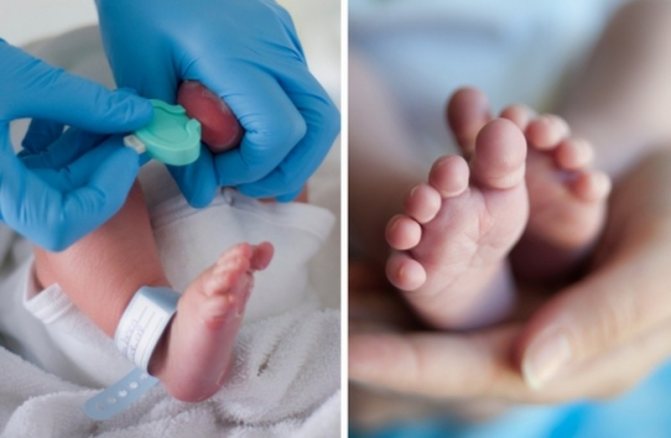
Parents are often interested in the question: is it possible, instead of venous blood, to take a capillary blood test taken from the baby’s heel or toe? It turns out that it is impossible, because their composition is completely different, and the volume of blood is relatively large, and it cannot be taken from a finger. It is believed that the procedure of taking blood from a finger is more traumatic than from a vein.
Why are children afraid to donate blood?
Children from the age of 6-7 months are afraid of little women in white coats after they have been vaccinated (find out from the article what to do if a child is afraid of injections>>>). And when they grow up a little, they already understand from the conversation what they will do.
Usually, fear manifests itself very strongly in those years when children begin to realize and understand everything around them.
The main reason for children's fear is the pain that the baby experiences during various medical procedures. Other factors may also influence fear:
- the doctor's cold hands;
- metal tools;
- the scream of other children from the office;
- waiting in stuffy corridors.
What else influences?
- A child is afraid to donate blood from a fingerstick if his aunt in a white coat hurt him once. The baby remembers this pain for a long time and, at the next visit to the doctor, begins to be capricious;
- Also, in some cases, the parents instill fear in the little one, telling him that if he does not obey, then the doctor’s aunt will come and give an injection;
- Sometimes parents themselves create fear with their fear and this is passed on to the baby, who also begins to be afraid;
- If parents and doctors scold a baby for hysterics in the office, they only make things worse. In this case, the toddler develops fear for many years.
Needles and syringes
How is blood taken from a vein from infants? For this purpose, there are special syringe tubes and syringe systems that allow vacuum blood sampling. They are intended for taking blood for a specific analysis. For this purpose, the syringes are equipped with multi-colored caps so that it is possible to visually determine which one to use in a particular case. Each test tube is already filled with a special type of reagent.
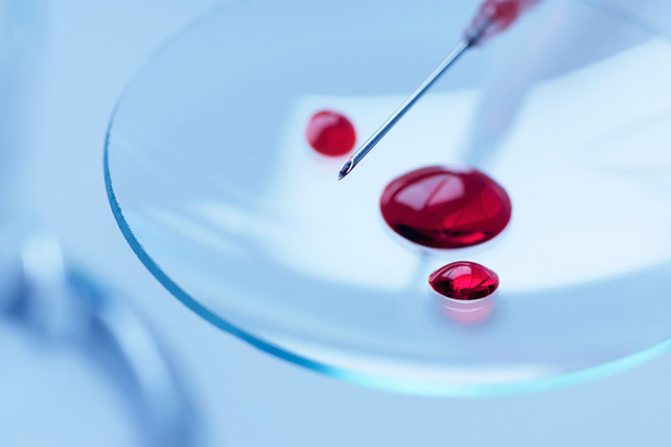
A vacuum vacuum is created in it, as a result of which the required volume of blood for a specific analysis is recorded, which is collected in 6-8 seconds. Through a double-ended needle, blood flows directly into the test tube without contact with the external environment, providing increased accuracy for the analysis. The container is made of plastic, which makes it practical.
GENERAL RULES
Important! The rules are the same; they are written for adults and children, but we provide separate comments regarding infants. |
- For most studies (for example, a general blood test), it is recommended to donate blood in the morning, between 8 and 11 o’clock, on an empty stomach (at least 8 hours must pass between the last meal and taking blood, you can drink water as usual), the day before research light dinner with limited intake of fatty foods. For tests for infections and emergency studies, it is acceptable to donate blood 4-6 hours after the last meal. to take blood samples from infants between feedings. But if this doesn’t work out, don’t at all costs not feed your child before taking the test! It is better for the child to be calm while taking a blood test than for him to cry from hunger.
- ATTENTION! Special preparation rules for a number of tests: strictly on an empty stomach, after a 12-14 hour fast, you should donate blood for gastrin-17, lipid profile (total cholesterol, HDL cholesterol, LDL cholesterol, VLDL cholesterol, triglycerides, lipoprotein (a), apolipo-protene A1, apolipoprotein B); The glucose tolerance test is performed in the morning on an empty stomach after 12-16 hours of fasting.
- On the eve of the study (within 24 hours), avoid alcohol, intense physical activity, and taking medications (in consultation with your doctor).
- 1-2 hours before donating blood, refrain from smoking, do not drink juice, tea, coffee, you can drink still water. Avoid physical stress (running, quickly climbing stairs), emotional excitement. It is recommended to rest and calm down 15 minutes before donating blood.
- You should not donate blood for laboratory testing immediately after physiotherapeutic procedures, instrumental examination, X-ray and ultrasound examinations, massage and other medical procedures.
- When monitoring laboratory parameters over time, it is recommended to conduct repeated tests under the same conditions - in the same laboratory, donate blood at the same time of day, etc.
- Blood for research must be donated before starting to take medications or no earlier than 10–14 days after their discontinuation. To assess the control of the effectiveness of treatment with any drugs, a study should be conducted 7-14 days after the last dose of the drug.
Important! If you are taking medications, be sure to notify your doctor. |
General rules apply to all tests, but some tests require special preparation and additional restrictions. It is very important to strictly follow the recommendations below, since only in this case will reliable research results be obtained.
What are butterfly needles?
How is blood taken from a vein from infants to minimize pain and take it quickly? For this, butterfly needles are used, equipped with a long catheter and two wing-shaped limiters, very similar to this insect.
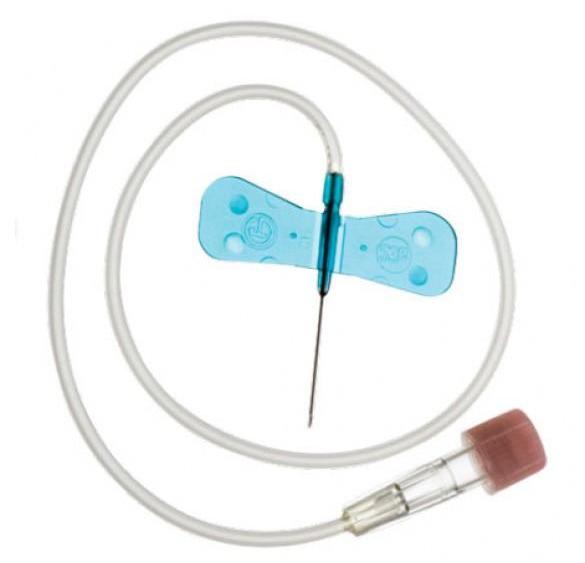
This model of needle can be used to collect biological fluid from patients of any age, but it is especially suitable for newborns and infants. The strong fixation of the catheter easily allows you to take blood from the most active and frightened babies. One of the advantages of a needle is minimal trauma to tissue. These needles are widely used in intensive care units.
How can parents prepare?
Is blood taken from a vein from a baby? As was clarified earlier, yes, they do. And this necessary procedure is carried out to preserve the health of the newly born baby. Parents have to create a favorable atmosphere in the clinic for the child and support him. To do this, it is recommended to adhere to the following recommendations:
- Calm down and don’t panic, this will keep your baby in a good mood.
- If the child is older than two months, then you can take his favorite toy with you, which will help him calm down.
- If possible, the mother is present during the blood draw, holding the baby in her arms, distracting him from unpleasant sensations.
- After the procedure, the child must be fed. To do this, you need to take with you a bottle with formula, expressed milk, or give breastfeeding. Food always calms a child.

Parents need to understand the importance of the test results and not worry. The mother's calmness is transmitted to the child.
Causes of fear at different ages
Children of all ages are afraid to donate blood.
A baby under one year old forgets everything very quickly, but older children and preschool children remember the procedure for a long time. It is at this age that their imagination and emotions actively develop.
Preschoolers and young children are very sensitive and vulnerable. The baby may begin to be afraid of injections after accidentally pressing on the hand or when the voice rises (read the article on the topic: The child is afraid of loud sounds >>>).
The child is also afraid to donate blood from a vein, and even adult children have fear. Many schoolchildren, even if they are already 10 years old, are also terrified of donating blood, and this condition may be due to various reasons.
It happens that fear remains from early childhood, or maybe they are afraid of blood. If the problem is not solved, then this fear will remain for life.
Test results
After receiving a form with test results, parents independently try to decipher them, seeing that their values differ from the norm. You shouldn't do this. The doctor prescribes studies for himself and doctors of other specialties in order to, after analyzing all the data, get a complete picture of the child’s health status. Only a highly qualified doctor can correctly interpret all the data, comparing different indicators with each other. After all, the results depend on excitement, temperature, food consumed and many other factors. If doubt arises, the doctor prescribes additional tests and only then draws conclusions about the child’s health.
Equipment that helps take venous blood
To donate blood from a vein to a baby, you can use a modern venovisor device, which facilitates access to the vessels. The principle of operation of such devices is to obtain a projection of the course of the veins onto the skin, as if they were illuminated from the inside in order to be seen from the outside. In pediatrics, this is especially important, since the very loose subcutaneous fatty tissue of babies makes it difficult to find blood vessels.

Difficulties in collecting blood from newborns still arise due to its thick consistency and low pressure in the vessels. Donating blood on an empty stomach ends up in a vein, but there is not enough blood. Therefore, it is recommended to give children water before the analysis.
Why does it hurt so much?!
The fact that a mass of nerve endings are concentrated in the fingers, helping to tactilely sense the surrounding space, does not make donating blood any easier. It's really scary. You stretch out your hand, they rub cotton on your finger... a tense moment in which I always hold my breath - bang! The worst part is over. It seems that I would donate blood 200 times from a vein than once from a finger.
My son generally put on creepy performances in the laboratory. He started crying even in recreation, when we were sitting in line for analysis under the office door. I was already carrying the boy inside in my arms. Then, at the time of the injection, it should be held tightly. And the subsequent “pumping” of blood did not go smoothly: the child kicked, screamed obscenities, and beat the laboratory assistants. I came out of the office, red and disheveled. And the baby cried and hiccupped for at least half an hour. From pain, resentment.
Did I try to persuade my son? But of course! And he was promised legos, and sweets and joy. And the aunts constantly insisted that it wouldn’t hurt. Until something clicked in my head. How does this not hurt? It hurts, and how!
At that time, my son was already 4 years old and we began preparing for blood donation at home. I immediately said that we were going to donate blood. While still at home, Andrei threw a tantrum and cried. Then we discussed some questions:
- It will definitely hurt. And we both know it.
- It is impossible not to donate blood - the child has a long-term cold with fever.
- If it hurts, you can cry.
- If you pull out, it hurts more. Verified.
Having talked everything over, we went to the clinic. And this was the first time I did not hold my son during the procedure. He sobbed loudly, large tears rolled down, but did not take his hand away. Hooray, progress!

Where can I get a blood test for my baby?
Parents need to take a responsible approach to choosing a medical institution and consult with friends in advance about how to take blood from a vein from infants in a particular medical laboratory. Much depends on the medical professional. He must be a true master of his craft and carry out all manipulations quickly and painlessly, without causing anxiety or fear in the baby. The positive psychological attitude of adults also plays an important role.
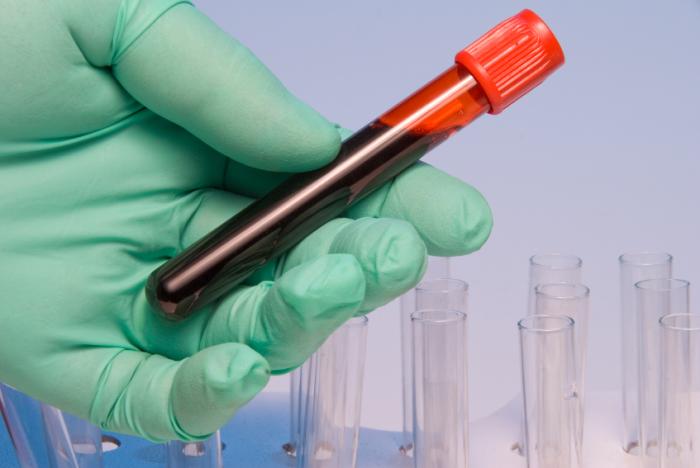
It is important to trust that competent medical staff will perform all manipulations correctly and without unnecessary pain. To minimize unpleasant consequences, the child should be given a little time to get used to the new environment in the treatment room. Some clinics practice taking biological fluid without the presence of parents. Do not be surprised or resist if you are asked to leave the room while blood is being drawn. The specialists know their job, and nothing bad will happen to your baby in a few minutes of waiting in the hallway.
